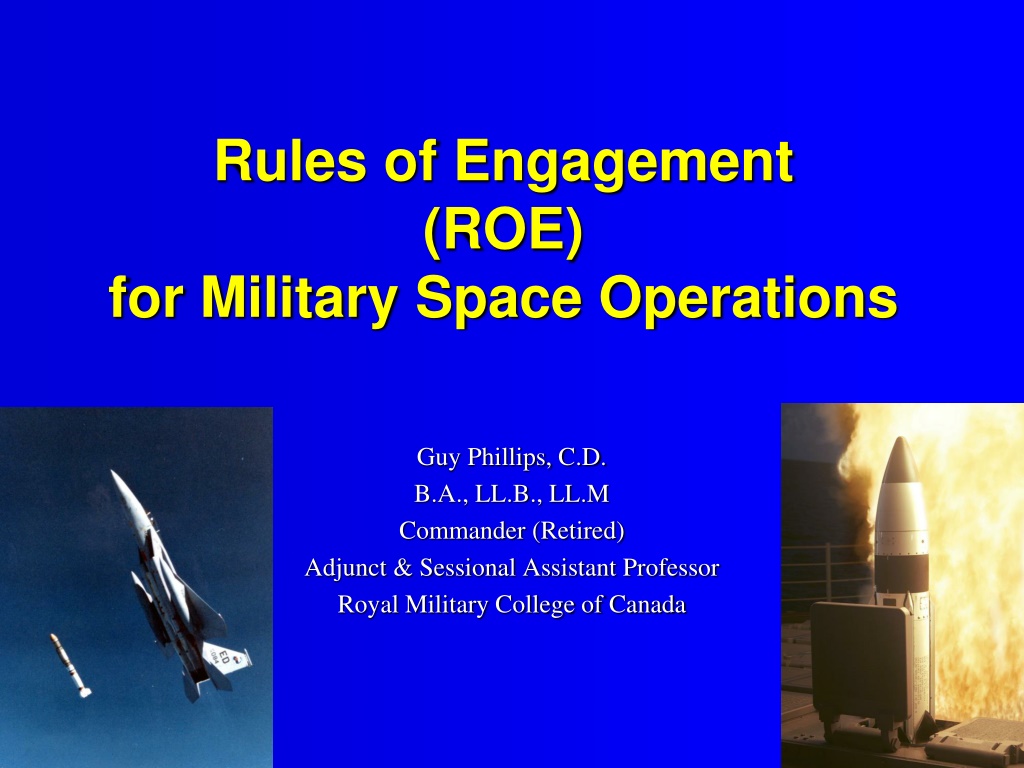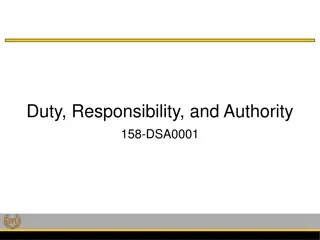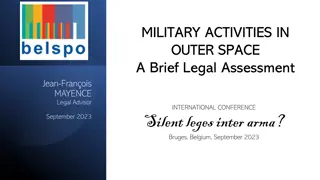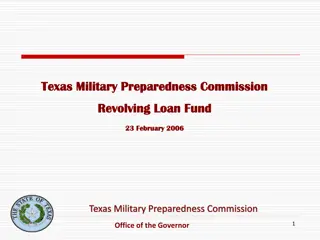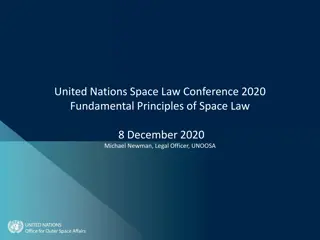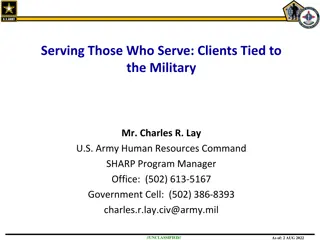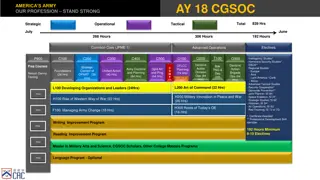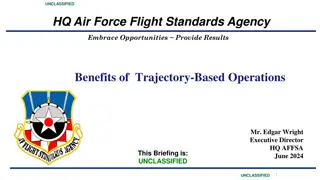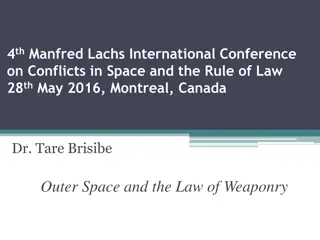Rules of Engagement (ROE) for Military Space Operations
Military space operations rely on Rules of Engagement (ROE) as a doctrinal tool to ensure political and military command, prevent crisis escalation, and guide the use of force. This article delves into the structure, theory, and key issues surrounding ROE in the context of national and international laws governing self-defense and offensive actions in space.
Download Presentation

Please find below an Image/Link to download the presentation.
The content on the website is provided AS IS for your information and personal use only. It may not be sold, licensed, or shared on other websites without obtaining consent from the author. Download presentation by click this link. If you encounter any issues during the download, it is possible that the publisher has removed the file from their server.
E N D
Presentation Transcript
Rules of Engagement (ROE) for Military Space Operations Guy Phillips, C.D. B.A., LL.B., LL.M Commander (Retired) Adjunct & Sessional Assistant Professor Royal Military College of Canada
Outline Intro to ROE Basic ROE Structure & Issues Military Space Operations ROE Conclusions
Intro to ROE ROEs are military doctrinal tool not legally required may be legal orders or merely guidance Purposes: Political and military command and control Ensure the rule of law Prevent crisis escalation Provide direction on threat & use of force in self-defence or offence Structure: Prohibitions Restrictions Permissions
ROE Theory Four ROE factors: National political direction International policy & diplomacy Operational factors (National) & International law
Roach Venn Diagram Politics Diplomacy ROE Operations Law
Structure & Issues Jus ad bellum UN Security Council Chapter VII Resolution Self-defence under criminal or international law General international law & lex specialis Law of the Sea Air & Space Law Jus in bello Hague Stream (means & methods) Geneva Stream (humanitarian principles)
Jus ad bellum Issues Legal authority to use force UNSCR Self-defence of Individuals Units State (national) Self-defence against: Hostile act Hostile intent Capability Intent
Jus in bello Issues Geographic & Proximity Means & methods Targeting Military objectives Dual-use ID & targeting methodology Neutrals EF, Cyber & Other Weapons Prohibited / Restricted Effects Non-destructive/interference Destructive/neutralizing Ruses/deception LOAC/IHL for ground-based assets & effects
LOAC/IHL Principles Military necessity Distinction Humanity Proportionality
Conclusions ROE crucial analytical tool amalgam of four ROE factors helps define threats & responses issues information required approval authority levels prevent hasty, ill-informed and incorrect decisions and reactions
